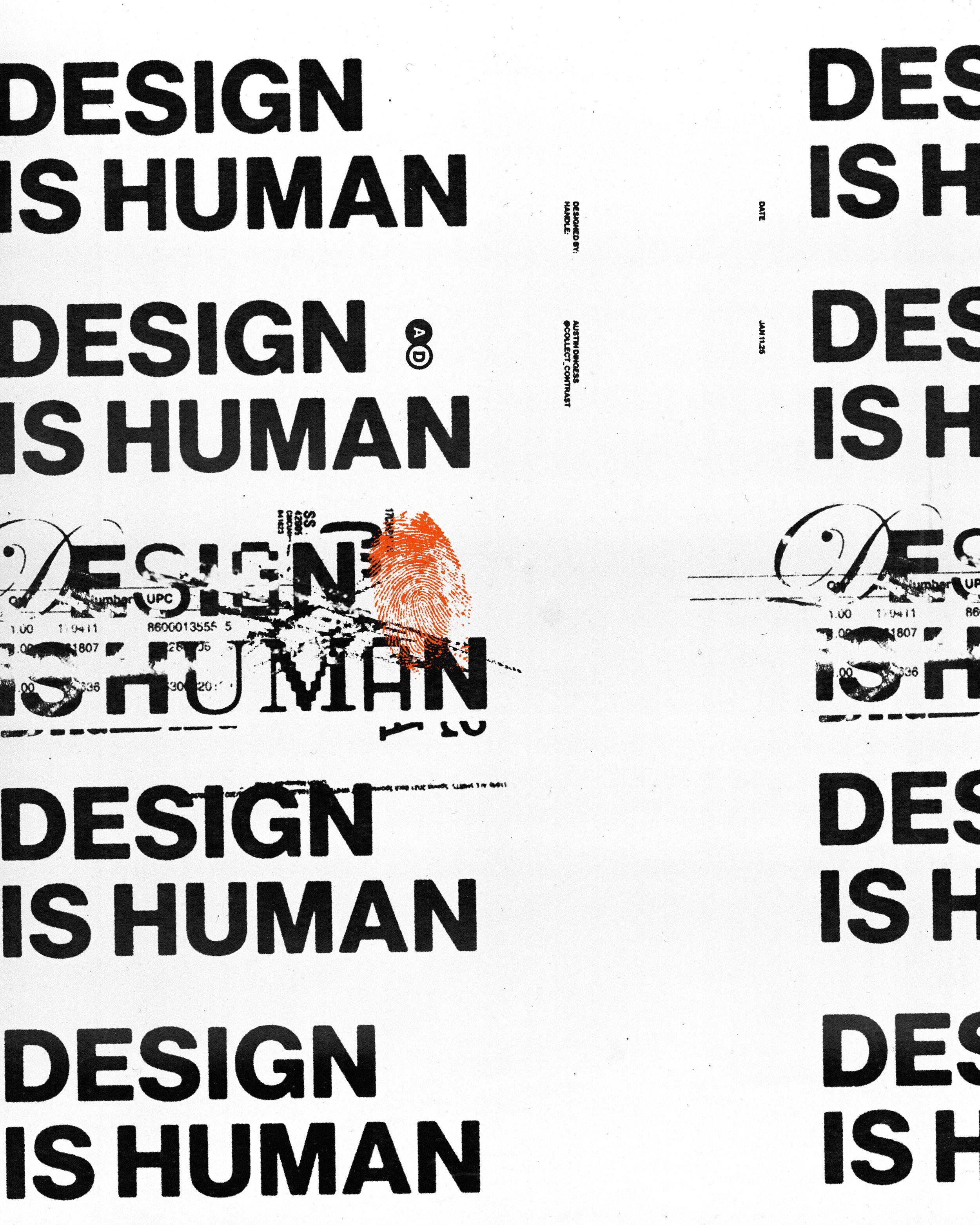
Design is Human
What is the purpose of design? I’m sure we could argue back and forth on an exact definition, but I feel like most people would agree its purpose is to communicate something visually. As designers, we take ideas, concepts, and messages and try to make sure they are seen and understood by the people we want to communicate with.
Imagine this scenario. You walk into work, sit down, ready to begin your day. Your co-worker walks by and you greet them with a friendly hello and a smile. In return, they ignore you and walk right past. No malice or angry looks. Their face is glazed over and they are unperturbed by the world around them. You put that interaction behind you and get to work. Until your boss comes up to your desk, they start giving out commands. There is no tone, there are no pauses, there is no personality. As if they were a robot, they begin listing off the things they need you to do and once you say yes, they promptly turn and leave. This is odd, but you do your work and head home for the day.
After such a long day, you’re ready to relax. As you open the door, letting the tension of the day begin to wash away, and you see your spouse getting ready for dinner. You go to embrace them and say hello. You put your arm around them and say “Hello love!” Your spouse echoes your words without any affection “Hello love.” They continue their task, not looking up, not smiling back, and not acknowledging your touch. They just continue to finish dinner until it’s ready. They set the table and you eat in silence. No words are exchanged, only the sounds of forks and knives clanking and scraping against the ceramic plates.
Let’s come back to reality.
The people in this story communicated directly, without malice or emotion. It was efficient, but would you call it enjoyable? Would you want to live in a world where every interaction felt like this?
The funny thing is, this is often the world we live in. There are thousands of brands trying to communicate with us, but they do so without any joy. Without any interest. Without any humanity. Their words are nothing more than a way to accomplish a goal. To get from A to B. There is no position, interest, perspective, or personality. They’ll attempt to overcome this by putting a smiling face in the graphic or adding some happy music to a video! These things communicate what they may want me to think or feel, but ultimately, it doesn’t connect.
The exterior of their brand is nothing more than a large, colorful coat that hangs off their robotic skeleton. But this coat won’t fool you. As soon as you interact with it, you know it’s just a robot imitating human interaction.
We know what it’s like to connect with other people. Everyone has something distinct that makes them human. Brands that fail to tap into this humanity will never truly connect.
A brand that doesn’t connect with the humanity of the people they are trying to communicate with will fail. This needs to be evident in the logo, brand colors, and typography. Of course, that’s the visual stuff that’s seen most often, but it also needs to extend to the tone of voice, marketing, customer service, social media, and more. If everything I’ve listed (and more) has personality and makes it feel like I’m interacting with an actual human being, then you’ll do what most brands can’t. Make people stick around and advocate for you.
I’ll give an example. If you haven’t heard of Chewy, they’re a pet products retailer. As you can imagine, they probably care about animals. A few months ago, our family dog passed away and my mom had to cancel a few subscriptions with them. It was a big surprise when they sent my mom a bouquet of flowers! How sweet is that?! They went the extra mile and made a genuine connection to my family.
I’m not someone who operates on brand loyalty, but I can’t lie. I’ve seriously considered shifting all my own pet spending to Chewy. As an animal lover, I’m endeared to the thought of doing business with people who genuinely share that interest. They didn’t use buzzwords to tell me how much they care, they did something special and unique that built a true connection.
This is why I say ‘Design is Human’.
If we’re not designing for the humans on the other end of our designs, then we’re doing it wrong. If it feels inauthentic, corporate, or bland, it’s not going to have the impact you want. We don’t design for robots. We design for people. It’s time we start doing just that.
CMMA Visual Identity
Visual Identity, Logo Design
Collect & Contrast Visual Identity
Visual Identity, Logo Design



